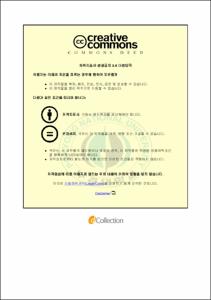영화 Charlotte's Web을 활용한 수업지도안 개발
- Abstract
- The purpose of this study is to explore effective ways of using film in communicative teaching and learning. For this purpose, the value of film and its effectiveness as a teaching resource were examined. Several advantages of using film in classroom suggested in this study are as follows: authenticity, provision of cultural knowledge, promoting motivation, accessibility, and relatedness to follow-up activities. Film provides not only a source of language used in real-life but also cultural information through authentic contexts or given situations. Moreover, film develops students’ interest and curiosity in the target culture and language, thereby acting as a source of motivation. Film also serves as a springboard for related post-viewing communicative tasks and activities. For these reasons, film can be exploited as a means of improving communicative competence.
This study proposes useful teaching plans to improve communicative competence adapting movies. The study draws on teaching-learning activities designed by Wood, Stempleski, and Tomalin, as well as instructional models devised by Allan. The teaching plans target third grade middle school students, using the movie Charlotte's Web. The conclusion of this study is as follows: First, the power of film to interest learners brings positive effects on target language learning. Second, film makes an excellent use of technology to convey contemporary cultural and linguistic information. Third, the use of film in the classroom enables successful language acquisition only when the film to be used in a class undergoes a careful selection process. Lastly, film can be used to design effective communicative activities in contrast to traditional teaching activities, such as simple translation and cloze tests using passages from the transcript.
This study suggests that the practical use of film positively affects the affective, linguistic, and sociocultural factors in English learning and contrives teaching plans to improve learner's communicative competence. Because teaching plans have not been systematically implemented in the classroom, their pedagogical effects may not be verified. However, it has been widely accepted that movies are useful tools when it comes to teaching English in EFL classes. Thus, practitioners and researchers should develop proper instructional models and activities for using movies in English classes.
- Issued Date
- 2013
- Awarded Date
- 2013. 8
- Type
- Dissertation
- Publisher
- 부경대학교
- Affiliation
- 교육대학원
- Department
- 교육대학원 영어교육전공
- Advisor
- 윤희수
- Table Of Contents
- 목 차
ABSTRACT
Ⅰ. 서 론 1
1.1 연구의 필요성 및 목적 1
1.2 연구 과제 4
1.3 연구의 제한점 4
Ⅱ. 이론적 배경 5
2.1 의사소통 중심언어 교수법 5
2.1.1 의사소통 능력 6
2.1.2 의사소통 중심 언어지도의 원리 7
2.1.3 의사소통 중심 교수 활동의 특징 9
Ⅲ. 영화를 활용한 영어교육 12
3.1 영화의 교육적 효과 12
3.1.1 진정성(Authenticity)을 가진 언어 자료 제공 12
3.1.2 문화 인식의 고취 13
3.1.3 접근의 용이성 14
3.1.4 후속활동으로의 안내효과 15
3.1.5 학습자의 동기 유발 16
3.2 영화의 일반적인 선정기준 17
3.2.1 내용적 측면 18
3.2.2 학습활동의 측면 19
3.2.3 언어적 측면 19
3.3 전통적 교수법에서의 영화의 활용 20
3.3.1 영화를 활용한 현 교실 상황 20
3.4 영화를 활용한 수업모형 21
3.4.1 Allan의 수업 모형 21
3.5 영화를 활용한 교수 학습활동 23
3.5.1 어휘 및 문법 지도 23
3.5.2 듣기 지도 24
3.5.3 말하기 지도 25
3.5.4 쓰기 지도 27
3.5.5 읽기 지도 27
Ⅳ. 영화를 활용한 교수 방안 29
4.1 영화의 선정 및 소개 29
4.1.1 영화의 선정 29
4.1.2 영화의 줄거리 33
4.2 영화의 실제 활용 34
4.2.1 차시별 내용 선정 35
4.2.2 수업절차 37
4.2.3 수업 활동 내용 39
4.2.4 수업 지도안 44
Ⅴ. 결과 및 논의 62
참고문헌 66
- Degree
- Master
- Files in This Item:
-
-
Download
 영화 Charlotte's Web을 활용한 수업지도안 개발.pdf
기타 데이터 / 864.85 kB / Adobe PDF
영화 Charlotte's Web을 활용한 수업지도안 개발.pdf
기타 데이터 / 864.85 kB / Adobe PDF
-
Items in Repository are protected by copyright, with all rights reserved, unless otherwise indicated.